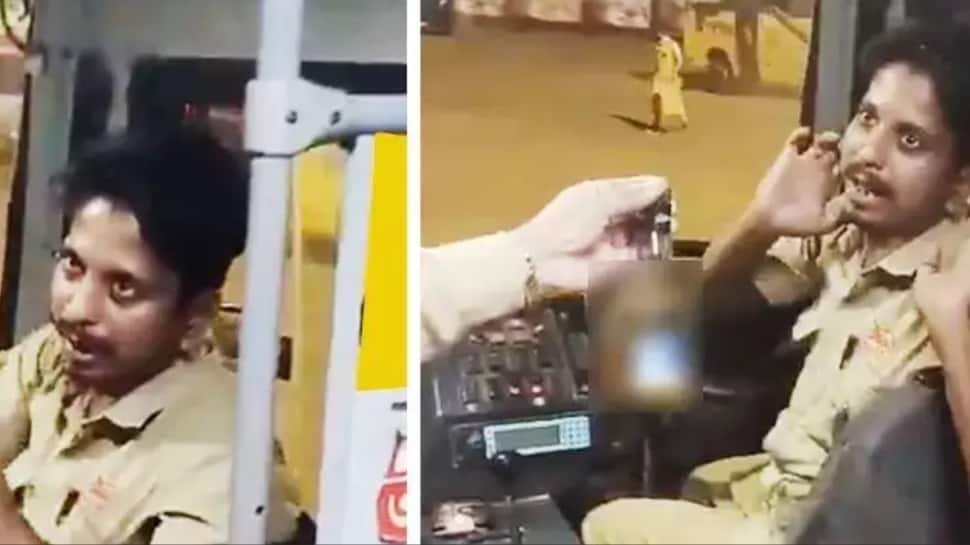 |
|
The recent tragic bus accident in Mumbai's Kurla West, resulting in seven deaths and forty-two injuries, has cast a harsh light on the practices of some drivers within the Brihanmumbai Electric Supply and Transport (BEST) undertaking. The accident itself, involving a wet-leased electric bus, sparked outrage and prompted investigations, leading to the surfacing of several videos depicting BEST drivers engaging in alcohol consumption while on duty. These videos, widely circulated on social media, paint a concerning picture of safety protocols and the potential for further incidents.
One video, reportedly from the Mulund depot and filmed on election day, shows a driver consuming alcohol at the wheel while being questioned by a security officer. The swift action taken in this case resulted in the driver's immediate dismissal. However, three additional videos have emerged, showcasing drivers stopping their buses, purchasing alcohol, and then returning to their seats. Two of these instances occurred in Bandra East and Andheri, while the location of the third remains unclear. The Bandra East video was filmed just two days after the Kurla West accident, highlighting the apparent lack of immediate consequence following the tragedy.
The lack of clarity surrounding the disciplinary actions taken against the drivers in the latter videos raises serious questions about accountability within the BEST system. While the immediate dismissal of the driver caught drinking at the wheel is a positive step, the absence of reported consequences for the other drivers suggests a need for stricter enforcement of regulations and enhanced oversight. This discrepancy in disciplinary action underscores a potential systemic issue requiring thorough investigation and reform.
The BEST Kamgar Sena president, Suhas Samant, publicly criticized these actions, highlighting the negative impact on the reputation of BEST and its employees. He drew a distinction between wet-leased drivers, whose actions are highlighted in the viral videos, and BEST's own employees, claiming that the latter are bound by stricter regulations and would be less likely to engage in such behavior. This distinction, while potentially true, does not negate the overarching issue of safety concerns and the necessity for comprehensive safety protocols applicable to all drivers operating within the BEST system.
In response to this growing crisis, BEST general manager Anilkumar Diggikar held a meeting with wet-lease bus operators. A decision was made to mandate breathalyzer tests for drivers, among other measures aimed at preventing future accidents. This proactive approach, while necessary, should be viewed as only a first step in a broader reform initiative. The effectiveness of these new measures will depend heavily on consistent enforcement and a comprehensive review of the training, monitoring, and disciplinary processes within the BEST organization.
The events following the Kurla West accident serve as a stark reminder of the importance of prioritizing safety within public transportation. The immediate dismissal of one driver, coupled with the planned introduction of breathalyzers, are positive steps, but more fundamental changes are necessary to address the deeper issues revealed by the viral videos. A thorough investigation, focusing on both the wet-leased and directly employed drivers, should be conducted to identify systemic weaknesses and implement robust solutions to ensure passenger safety and prevent future tragedies. This includes not only technological solutions, like breathalyzers, but also stricter enforcement of existing regulations, enhanced training programs, and increased oversight of driver behavior to foster a culture of safety and responsibility.
Beyond the immediate responses, a broader societal conversation is needed about the working conditions of bus drivers, their access to support services, and potential pressures that might contribute to risky behaviors. Addressing these underlying factors could prove essential in creating a sustainable environment where safety is prioritized and upheld. Furthermore, enhanced public transparency regarding the investigation's findings and the subsequent actions taken will be critical in rebuilding public trust and confidence in the BEST system.
Source: After Accident In Mumbai's Kurla, Video Of BEST Drivers Buying, Hiding Alcohol In Buses Goes Viral
